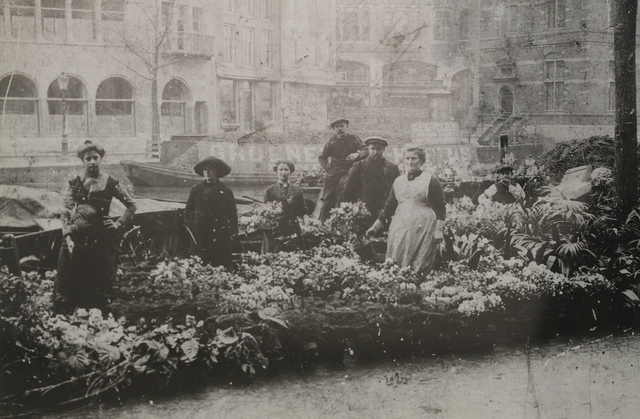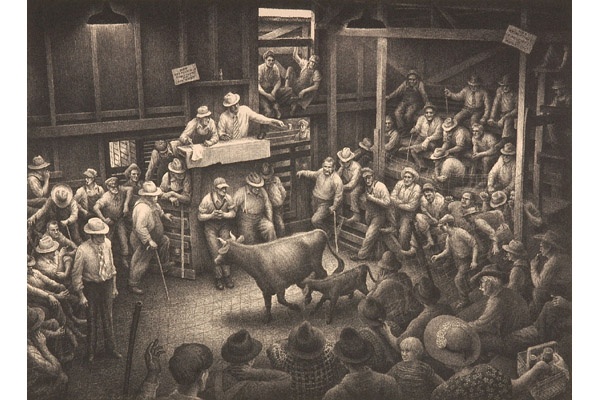Published on January 9th, 2015

In the middle ages, auctions were fairly popular for all sorts of things.
When did auctions begin?
How long have they been in the known world? It’s a huge subject with a long, long history. All of which will be covered here in the history of Auctions.
Webtron is well known globally for our online auction software and service. But where did it all begin?
A history of auctions
Let’s take the opportunity to trace back the fascinating history of auctions.
The earliest recordings begin from as far back as 500BC. According to Herodotus, in Babylon auctions of women for marriage were held annually. The auctions began with the woman the auctioneer considered to be the most beautiful and progressed to the least. It was considered illegal to allow a daughter to be sold outside of the auction method.
The word “auction” is derived from the Latin augeo, which means ‘to increase.’
Popularity of auctions
Auctions became a common place during the Roman Empire. Slaves and prisoners of war being auctioned to the highest bidder. And the proceeds of which went towards the war efforts. The Romans also used auctions to liquidate the assets of debtors whose property had been confiscated. Roman soldiers also used to sell war plunder at auction. The licensed auctioneer, called “Magister Auctionarium,” drove a spear into the ground to start an auction. This was the predecessor of the auction gavel that we now use today.
In the year 193AD, the entire Roman Empire was sacked and put up for auction!
In the ancient world there is also evidence that Buddhist monks in China used the auction process. It would have been used to sell the property of deceased monks to fund the building of temples. But that is all that’s known, as auctions were not widespread in Asia.

Dutch garden auction in progress.
Sale of goods
The British organised regular auctions of books and art in the 1600’s. The sale of goods at “public outcry” seemed to be a normal method of selling general goods. Catalogues of auctions in England have survived the times, as the terms “auction” and “public auction” appeared in English writings in the late 1600’s. Another popular method of auction was ‘auction by candle.’ Under this method, bidders had until the flame of the candle went out to do their bidding. This ensured that there were no last second bids.
The early European settlers arrival to America from Britain in the 1600’s. This settlement ensured the methods and influence of English customs such as auctions. And later on, it also arrived on Australian shores and all corners of the British Empire the same way.
Auctions gained popularity for the sale of imported goods, farm goods and supplies, as well as entire farms.Back then as today, selling at auction was the fastest and most efficient way to convert assets or goods into cash.
Even in these times auctions were necessary when property needed to be sold to satisfy debts or for nonpayment of taxes. Some believe the stigma of selling at “forced sales” attached itself to the auction business for centuries.
The fur trade
Fur was a valuable commodity at this time. And they were purchased from the native Americans to be sold at Auction. This was especially true during spring. The early fur trade played an important part in the settlement and development of the North America.
Around this time as auctions were beginning to flourish in America, the Civil War occurred. Auctioneers gained another name, Colonel. This was due to Civil War colonels who regularly auctioned off the spoils of war and the surplus supplies. It was much like what occurred all the way back in the Roman Empire. As the armies marched, auctioneers followed in their footsteps. They also dressed so similarly to army colonels that they began to be called as such.
A darker side to auctions
A darker side of the auction industry from days gone by were slave auctions. These were also once popular in the Roman empire. Slave auctions were also taking place in America until 1865. This was when slavery was abolished at the end of the US civil war.
Other less known names for auctioneers over history are ‘Knights of the hammer’ and ‘brothers’.

Cattle became a very popular selling point in Australia, in particular.
The world’s oldest auction house
The oldest auction house in the world still operating is Stockholms Auktionsverk. It was established in Sweden in 1674.
Other notable Auction House names that may be of interest in the history of auctions were the establishment of Sotheby’s and Christie’s. Sotheby’s held its first auction in 1744 and is now considered the world’s second-largest collectables auction house. Christie’s established around 1766. And it is considered the world’s largest collectables auction house.
Different types of auctions
As Auctions continued to spread across the world, different types of auctions began to surface. The first known auction type, known for its rising of price, is now referred to as an ‘English’ Auction. Whereas a lowering of price during an auction is now referred to as a ‘Dutch’ Auction. Sealed bid or blind auctions have bidders simultaneously place their bids on an item, with the highest winning. There are many other forms of Auctions available to cover. But the main three are both the oldest and most popular methods.
From the 17th Century onwards, the majority of Europe, such as Germany and the Netherlands, embraced the concept of auctions. And they were used in everyday life henceforth. Going to auction for fisherman and farmers was the quickest way to sell produce and satisfy customer demand.
The theatre aspect of auctions
One can imagine the theatre of auctions and auctioneers during these times. Then as today an auctioneer that can entertain, captivate and control an audience with humour, authority and a little knowledge can drive sales. The thrill to bargain seekers, as well, as buying under the pressure of an auction has always been appealing to buyers.
Later on in the 17th century with the First Fleet arriving on Australian shores in 1788. The english method of auctions was brought with them. Wool, sheep and cattle were considered a valuable resources. And these later became a regular auction fixture in Bourke street, Melbourne by 1850. Sydney and Melbourne were rapidly growing cities during the 19th century. And both cities had growing economies which provided opportunities for entrepreneurs.
A pioneering Australian auctioneer
One notable Australian pioneering auctioneer was Robert Hoddle.

Robert Hoddle was also an Australian pioneering Auctioneer
Hoddle name is synonymous with town planning to this day in Australia, for being the senior surveyor for Port Phillip (City of Melbourne). Hoddle was responsible for submission of the now famous Melbourne city street grid plan. One of Melbourne’s main roads is named after him, Hoddle street.
Hoddle was also appointed as auctioneer for the first sale of crown land in Melbourne on 1 June 1837, at which he sold half-acre (0.2 ha) allotments for £18 to £78, considered expensive at the time. Hoddle’s commission was £57 12s. 7d., from which he bought two allotments for himself at a cost of £54, later building a home on one of these allotments.
Melbourne: the property auction capital
Melbourne has since these times been considered the property auction capital of the world. Through the 20th century and today most houses sold in Melbourne are sold via auction.
This had not always been the case for house auctions in other Australian cities. But the trend of selling via auction had grown overtime in other Australian cities following the Melbourne tradition.
Unlike the majority US property auctions which are sold in bulk from one location, Melbourne house auctions are sold individually at the actual house address site location. A single auction which is promoted and marketed as an event by the real estate agents.
According to the website of peak Melbourne Victorian real estate body REIV.
“Melbourne lived up to its reputation as Australia’s auction capital with a record-breaking year in 2014. About 40,000 auctions were held – a new record, up from 34,500 last year and beating the previous record of 34,619 set in 2010”.
20th century auctions
Throughout the 20th century auctions and auction houses continued to thrive around the world selling all manner of assets and surplus goods including real estate, plant and machinery, automotive, livestock, collectables, liquidation, foreclosures and bankruptcy auctions.
The auction methods undertaken by auctioneers were largely unchanged and untouched by innovation for much of the 20th Century. This was until the dawn of the new millennium and the advent of projectors, faxes, computers, mobile phones, websites and online auctions.





